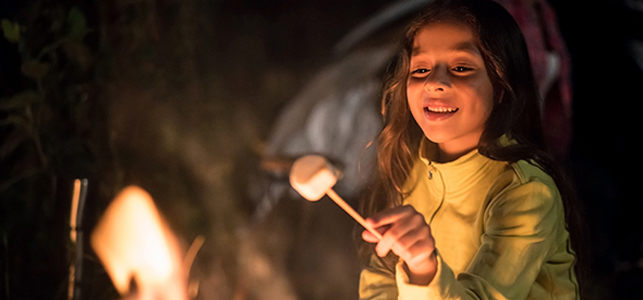
Tips for preventing burns during COVID
Coronavirus (COVID-19) has changed family schedules, leaving more opportunities for burns and other injuries.
With changes to normal family schedules come new opportunities for quality time, skill-building, adventure and, unfortunately…injury.
“We’ve seen an increase in children coming in with burns over the last few weeks,” said Dr. Michael Feldman, medical director of the Evans-Haynes Burn Center at VCU Health. “Many of these injuries have been related to cooking, fire pits and heaters. I strongly urge parents to take a few moments to ensure they have injury prevention measures in place. I know we are all stretched thin these days, which makes it all that much more important.”
Safeguarding your children from burns can prevent an unplanned trip to the hospital
Whether your family is multi-tasking in the kitchen or enjoying a relaxing evening around the fire pit, keep the following burn-prevention tips in mind to avoid an unplanned trip to the hospital. Specific approaches to prevent burns and scalds will depend on the age and understanding of each child.
Steps to take in your home to prevent burns
In the kitchen
From distracted and hurried adults to young chefs gaining new independence, burns in the kitchen can happen in an instant.
- Cook using the back burners when possible and turn the handles of pots and pans inward to prevent children from grabbing them.
- Keep hot foods and hot liquids away from the edge of the counter so they won’t get spilled by (or on!) little ones.
- Avoid holding a child while cooking. Teach young children to stay at least three feet from the oven/stove. If they’re too young to understand, place them in a secure spot, such as a high chair, while you cook.
- Use caution when taking food out of the microwave. Adults should help with this step, especially if the microwave is overhead. Slowly open containers to prevent burns to the fingers or face. For more microwave safety tips to prevent burns, click here.
Around the home
People often think of burn risks in the kitchen, but safety measures should be taken throughout the home.
- Store matches and lighters safely out of reach and sight. When you use them, teach kids not to play with them and talk about the dangers of fire.
- Keep kids away from fireplaces. Sparks and smoke from wood-burning fireplaces can cause burns without coming into contact with the flames. The glass on gas fireplaces can get extremely hot and take more than an hour to cool down after the fireplace has been turned off. Use a safety screen or gate as a barrier for young children.
- Always monitor children near space heaters. Place the heater on a sturdy, non-flammable surface and remind children not to touch it. Switch it off when not in use.
- Check smoke alarms. Make sure there is a working smoke alarm on every level of the home.
- Develop and practice a fire escape plan. Have a plan for all family members to get out of the home safely.
 Sinks and bathtubs
Sinks and bathtubs
Children’s skin is thinner than adults, so it burns more easily and at a lower temperature.
- Be vigilant when washing hands. Experts recommend scrubbing for 20 seconds, but the water temperature can change during this time. Help your child get the water set to the correct temperature before they begin washing.
- Turn the water heater down to 120°F. Many water heaters are set at 140°F, which is too hot for children. Check the water temperature with the inside of your wrist before allowing your child to get in the bath.
- Consider installing anti-scald devices in faucets and showerheads.
Outside fun
With more unstructured outside time, many families are looking for fun activities to keep kids and adults entertained.
- Opt for glow sticks instead of sparklers. Sparklers can heat up to more than 1,200 degrees and are very dangerous for young children.
- Use fire pits with caution. Teach children to respect fire, including to stay several feet away at all times. Even after the flames are extinguished, the fire pit may radiate enough heat to cause serious burns. Encourage kids to help with gathering wood, but leave the lighting and maintaining of the fire to adults.
Schedules are hectic and parents are stretched thin. The CHoR trauma and burn teams encourage you to take a time out! Will you spend 15 minutes spotting and correcting potential hazards?
